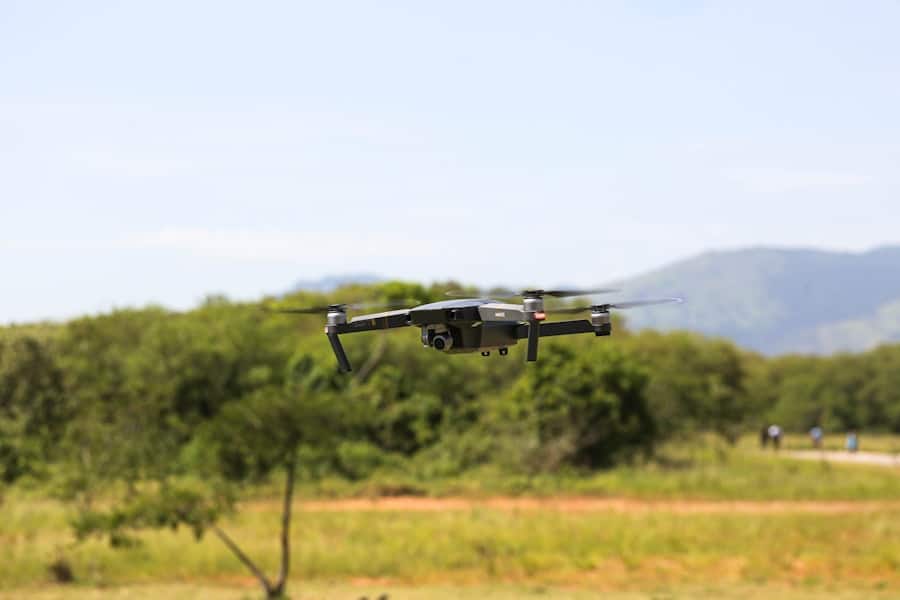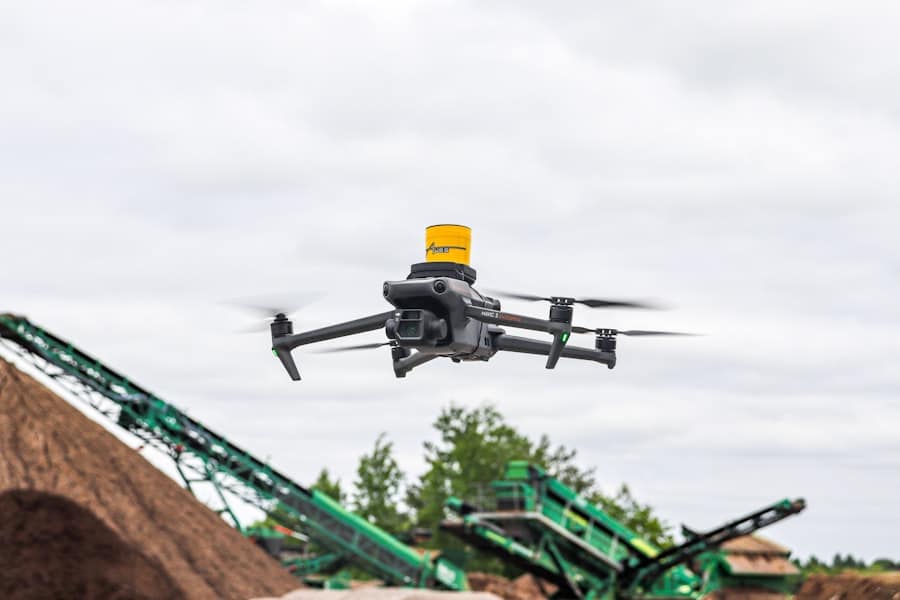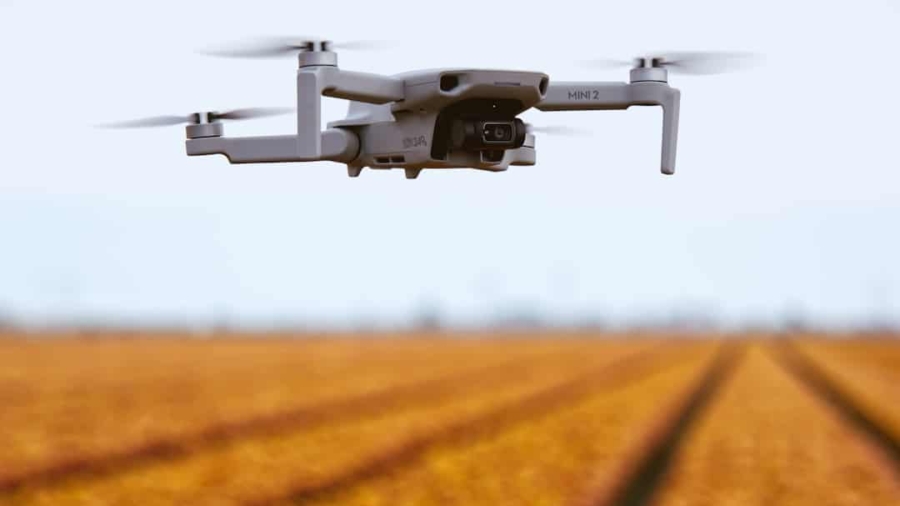Precision agriculture represents a transformative approach to farming that leverages technology to enhance crop yields, optimize resource use, and minimize environmental impact. This methodology is rooted in the idea of tailoring farming practices to the specific needs of individual plants or sections of a field, rather than applying a one-size-fits-all strategy. By utilizing data-driven insights, farmers can make informed decisions that lead to more efficient operations and sustainable practices.
The advent of advanced technologies such as GPS, IoT devices, and data analytics has paved the way for precision agriculture to flourish, allowing for a more nuanced understanding of agricultural ecosystems. The concept of precision agriculture is not merely about increasing productivity; it also encompasses the broader goal of sustainability. As global populations continue to rise, the demand for food is escalating, placing immense pressure on agricultural systems.
Precision agriculture seeks to address this challenge by promoting practices that reduce waste and enhance the efficiency of inputs like water, fertilizers, and pesticides. By integrating technology into traditional farming methods, farmers can achieve higher yields while simultaneously protecting the environment and conserving resources.
Key Takeaways
- Precision agriculture utilizes technology to optimize farming practices and increase efficiency.
- Drones play a crucial role in precision agriculture by providing real-time data for crop monitoring and analysis.
- A case study demonstrates the successful implementation of drones in precision agriculture, leading to improved crop yields and reduced costs.
- The use of drones in agriculture offers benefits such as increased productivity and sustainability, but also presents challenges like regulatory restrictions and data management.
- Drones enable farmers to collect and analyze valuable data for better decision-making and improved crop management practices.
The Role of Drones in Precision Agriculture
Drones have emerged as a pivotal tool in the realm of precision agriculture, offering farmers unprecedented capabilities for monitoring and managing their crops. Equipped with high-resolution cameras and various sensors, drones can capture detailed aerial imagery that provides insights into crop health, soil conditions, and overall field variability. This aerial perspective allows farmers to identify issues such as pest infestations, nutrient deficiencies, or water stress before they escalate into significant problems.
The ability to survey large areas quickly and efficiently makes drones an invaluable asset in modern agricultural practices. Moreover, drones facilitate real-time data collection, enabling farmers to make timely decisions based on current conditions. For instance, multispectral and thermal imaging sensors can detect variations in plant health that are invisible to the naked eye.
By analyzing this data, farmers can implement targeted interventions, such as adjusting irrigation schedules or applying fertilizers only where needed.
As drone technology continues to evolve, its applications in agriculture are expanding, further solidifying its role as a cornerstone of precision farming.
Case Study: Implementing Drones in Precision Agriculture

A notable example of drone implementation in precision agriculture can be observed in the operations of a large-scale corn farm in the Midwest United States. Faced with challenges related to crop monitoring and resource management, the farm’s management team decided to integrate drone technology into their practices. Initially, they employed drones equipped with RGB cameras to conduct aerial surveys of their fields.
The high-resolution images captured by the drones allowed them to assess crop health across thousands of acres in a fraction of the time it would take using traditional methods. As they became more familiar with drone technology, the farm expanded its capabilities by incorporating multispectral sensors into their drone fleet. This advancement enabled them to analyze plant health more comprehensively by capturing data on chlorophyll levels and other indicators of plant vitality.
The insights gained from this data allowed the farm to implement variable rate application techniques for fertilizers and pesticides, ensuring that inputs were applied only where necessary. Over time, this approach not only improved crop yields but also significantly reduced input costs and environmental impact, demonstrating the tangible benefits of integrating drones into precision agriculture.
Benefits and Challenges of Using Drones in Agriculture
The benefits of utilizing drones in agriculture are manifold, ranging from enhanced efficiency to improved decision-making capabilities. One of the most significant advantages is the ability to conduct rapid assessments of large areas, which is particularly beneficial during critical growth stages when timely interventions can make a substantial difference in yield outcomes. Drones can cover vast expanses in a matter of hours, providing farmers with timely information that can be acted upon swiftly.
This capability is especially crucial during periods of adverse weather or pest outbreaks when every moment counts. However, the adoption of drone technology is not without its challenges. Regulatory hurdles pose a significant barrier for many farmers looking to integrate drones into their operations.
In many countries, strict regulations govern the use of drones for commercial purposes, including restrictions on flight altitude and no-fly zones near populated areas or sensitive environments. Additionally, there is a learning curve associated with operating drones and interpreting the data they collect. Farmers may require training or support to effectively utilize this technology and integrate it into their existing workflows.
Furthermore, the initial investment in drone technology can be substantial, which may deter some farmers from making the leap.
Data Collection and Analysis with Drones
Drones excel at collecting vast amounts of data that can be analyzed to inform agricultural practices. The data collected can include high-resolution images, multispectral readings, thermal data, and even 3D models of fields. This wealth of information allows farmers to gain insights into various aspects of their operations, from soil health to crop performance.
For instance, thermal imaging can reveal areas of a field that are experiencing water stress, enabling targeted irrigation efforts that conserve water while ensuring optimal plant health. The analysis of drone-collected data often involves sophisticated software tools that can process and interpret the information gathered during flights. These tools can generate detailed maps highlighting variations in crop health or soil conditions across a field.
By employing machine learning algorithms and artificial intelligence, farmers can identify patterns and trends that may not be immediately apparent through traditional observation methods. This analytical capability empowers farmers to make data-driven decisions that enhance productivity and sustainability.
Improving Crop Management with Drone Technology

The integration of drone technology into crop management practices has revolutionized how farmers approach their operations. With the ability to monitor crops from above, farmers can identify issues early on and implement corrective measures before they escalate into larger problems. For example, drones equipped with multispectral sensors can detect nutrient deficiencies by analyzing plant reflectance patterns.
This information allows farmers to apply fertilizers more precisely, ensuring that each plant receives the nutrients it needs without over-application. Additionally, drones facilitate more efficient irrigation management by providing insights into soil moisture levels across different areas of a field. By identifying zones that require more or less water, farmers can optimize their irrigation systems to conserve water while maintaining healthy crops.
This targeted approach not only improves crop yields but also contributes to sustainable water management practices in agriculture. As drone technology continues to advance, its potential for enhancing crop management will only grow, offering new opportunities for farmers to improve their operations.
Future of Drones in Precision Agriculture
The future of drones in precision agriculture is poised for significant growth as technological advancements continue to unfold. Innovations such as artificial intelligence and machine learning are expected to enhance the capabilities of drones further, enabling them to analyze data more effectively and provide actionable insights for farmers. For instance, future drones may be equipped with advanced sensors capable of detecting specific diseases or pests at an early stage, allowing for immediate intervention and minimizing crop loss.
Moreover, as drone technology becomes more accessible and affordable, it is likely that smaller farms will also begin to adopt these tools. The democratization of drone technology could lead to a more widespread implementation of precision agriculture practices across diverse farming operations. Additionally, collaborations between tech companies and agricultural organizations may foster the development of tailored solutions that address specific challenges faced by farmers in different regions or crops.
The Impact of Drones on Agricultural Practices
The impact of drones on agricultural practices is profound and multifaceted. By providing farmers with real-time data and insights into their operations, drones have transformed traditional farming methods into more precise and efficient practices. The ability to monitor crops from above allows for early detection of issues and targeted interventions that enhance productivity while minimizing resource use.
As technology continues to evolve, the role of drones in precision agriculture will likely expand further, offering new opportunities for innovation and sustainability in farming. In summary, drones have become an integral part of modern agricultural practices, enabling farmers to navigate the complexities of crop management with greater ease and efficiency. The benefits they offer—ranging from improved decision-making capabilities to enhanced resource management—underscore their significance in addressing the challenges faced by the agricultural sector today.
As we look toward the future, it is clear that drones will play a crucial role in shaping the next generation of precision agriculture practices.
In the realm of technological advancements, drones have significantly transformed precision agriculture, offering farmers innovative ways to monitor and manage their crops. A related article that delves into the intersection of technology and creativity is Unlock Your Creative Potential with the Samsung Galaxy Book Flex2 Alpha. This article explores how cutting-edge devices, like the Samsung Galaxy Book Flex2 Alpha, empower users to harness technology for creative and efficient solutions, much like how drones are revolutionizing agricultural practices. By integrating advanced tools and technology, both fields demonstrate the potential for enhanced productivity and innovation.
FAQs
What is precision agriculture?
Precision agriculture is a farming management concept that uses technology to optimize crop yields and reduce input costs. It involves the use of data, such as GPS, sensors, and drones, to make informed decisions about planting, irrigation, fertilization, and pest control.
How do drones enhance precision agriculture?
Drones are equipped with various sensors and cameras that can capture high-resolution images of crops. These images can be used to create detailed maps of the fields, identify areas of stress or disease, and monitor crop health. Drones also enable farmers to quickly and efficiently survey large areas of land, providing valuable data for decision-making.
What are the benefits of using drones in precision agriculture?
Using drones in precision agriculture can lead to increased efficiency, reduced costs, and improved crop yields. Drones can help farmers identify and address issues in their fields early on, leading to better management of resources and higher-quality crops. Additionally, drones can reduce the need for manual labor and minimize the environmental impact of farming practices.
Are there any limitations to using drones in precision agriculture?
While drones offer many benefits to precision agriculture, there are some limitations to consider. Factors such as weather conditions, flight regulations, and the need for skilled operators can impact the effectiveness of drone use in agriculture. Additionally, the initial investment in drone technology and the need for ongoing maintenance and training should be taken into account.

